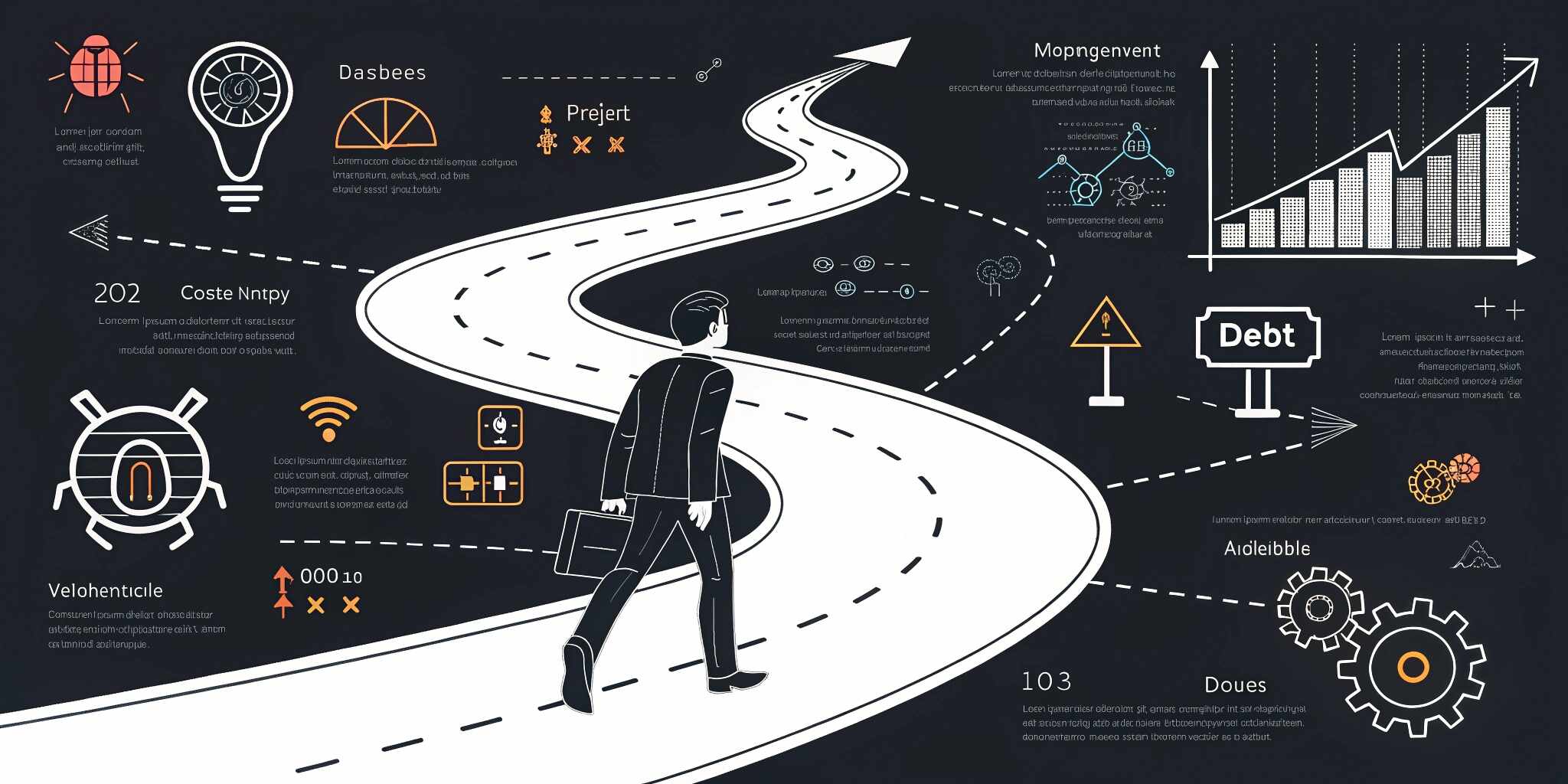In large IT projects, innovation often moves faster than perfection. Teams strive to deliver features quickly, meet deadlines, and stay competitive. However, in this race to innovate, shortcuts in coding, documentation, or architecture often lead to a hidden cost — technical debt.
Technical debt refers to the extra work and complexity that arise when short-term solutions are chosen over long-term best practices. Just like financial debt, it accumulates “interest” over time, making software systems harder to maintain, scale, or enhance.
Managing technical debt is not about eliminating it completely — that’s nearly impossible. Instead, it’s about strategically identifying, monitoring, and reducing it before it compromises project performance or business value.
1. Understanding the Nature of Technical Debt
Technical debt occurs when teams make trade-offs between speed and quality. This can stem from:
- Rushed development to meet tight deadlines
- Outdated technologies or frameworks
- Poor documentation or testing
- Lack of architectural consistency
- Inadequate team communication or handovers
While some debt is intentional (to accelerate delivery), much of it becomes unintentional, creeping into systems over time. Recognizing its presence early helps prevent costly issues later in the project lifecycle.
2. The Impact of Technical Debt on Large IT Projects
In large-scale IT environments, technical debt can have far-reaching consequences. Some of the most common impacts include:
- Reduced Productivity: Developers spend more time fixing old issues than building new features.
- Increased Costs: The longer debt remains unpaid, the more expensive it becomes to resolve.
- Performance Issues: Inefficient or outdated code affects application performance and reliability.
- Difficulty in Scaling: Systems become harder to extend or integrate with modern technologies.
- Low Morale: Continuous firefighting can lead to developer frustration and burnout.
Over time, unchecked debt can cripple even the most sophisticated IT systems.
3. Identifying Technical Debt Early
One of the most effective strategies in managing technical debt is early detection. Teams can use various techniques to identify potential debt, such as:
- Code Reviews: Regular peer reviews to maintain coding standards and identify design flaws.
- Automated Tools: Static code analysis tools like SonarQube help detect code smells, complexity, and vulnerabilities.
- Architecture Audits: Reviewing system design for maintainability and modularity.
- Technical Debt Register: Maintaining a log of known issues and prioritizing them for resolution.
Early detection ensures that debt doesn’t accumulate unnoticed and become unmanageable later.
4. Prioritizing and Managing Debt Strategically
Not all debt requires immediate repayment. The key lies in prioritizing what matters most based on risk and impact.
- Categorize Debt: Separate critical issues from low-priority ones.
- Estimate Effort: Evaluate the time, cost, and resources needed to fix each issue.
- Align with Business Goals: Focus on debt that directly affects performance, security, or customer experience.
- Integrate Fixes into Sprints: Allocate time in each development cycle for addressing technical debt.
By treating debt reduction as part of the development process, rather than a side task, teams ensure continuous improvement without halting progress.
5. Refactoring as a Continuous Practice
Refactoring — improving existing code without changing its functionality — is a powerful way to manage technical debt. Regular refactoring keeps systems clean, modular, and easier to maintain.
Best practices include:
- Simplifying complex code blocks.
- Updating deprecated libraries.
- Breaking large modules into smaller, reusable components.
- Removing redundant or duplicate logic.
Refactoring doesn’t need to be a large, one-time activity. Instead, integrating it into regular development ensures long-term project health.
6. Fostering a Culture of Quality and Accountability
Managing technical debt isn’t just a technical task; it’s a cultural responsibility shared by the entire IT team.
- Encourage Open Discussion: Create an environment where developers can voice concerns about design trade-offs.
- Educate Teams: Train teams on writing maintainable, scalable code.
- Leadership Support: IT leaders should prioritize quality alongside delivery timelines.
- Documentation Discipline: Maintain clear documentation to support future maintenance efforts.
When teams understand the cost of technical debt and value quality, sustainable development becomes the natural outcome.
7. Measuring and Monitoring Progress
Finally, tracking metrics can help gauge how well debt is being managed. Common indicators include:
- Code quality scores
- Test coverage percentages
- Number of bugs or regressions
- Time spent on maintenance vs. new development
These insights enable continuous improvement and ensure that teams stay accountable for long-term project health.
Conclusion
Technical debt is inevitable in any large IT project — but un-managed debt is dangerous. By combining proactive identification, prioritization, refactoring, and a strong quality-focused culture, organizations can control their technical debt and maintain a sustainable development pace.
In the end, successful IT teams understand that managing technical debt is an investment — not a cost. It’s what separates fast-failing systems from long-lasting success stories.


